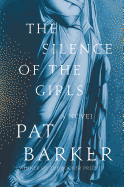
| Publisher: | Doubleday | |
| Genre: | War & Military, General, Literary, Fiction, Historical | |
| ISBN: | 9780385544214 | |
| Pub Date: | September 2018 | |
| Price: | $27.95 |
| Starred | Fiction |
by Pat Barker
The Iliad is the story of the Trojan War told by the victors, and by men. At long last, another perspective is offered, in Booker Prize-winner Pat Barker's The Silence of the Girls. Briseis was queen of a city near Troy and, after it fell to the Greeks, she was given as prize of honor to Achilles. After Apollo compelled him to forfeit a concubine, Agamemnon took Briseis for his own. This indignity inspires Achilles's famous sulk, which begins the Iliad.
In the tradition of Margaret Atwood's Penelopiad, The Silence of the Girls is a much-needed retelling. Where men sing of honor and glory, women experience a different war. They are controlled by men: by their fathers and husbands, and then by their captors. Briseis is beautiful and royal; she hates her new status as concubine, but sees the far worse treatment of the "common women" who sleep under the Greeks' huts, with their dogs, and are used by any man who pleases. She is clever and gives nuanced portraits of many characters in the Greek encampment below Troy's walls. She is proud, angered by the indignities of slavery. One of the book's themes is the question of authorship: she knows that it is Achilles' story that the world will hear, but she searches for her own within narratives of men and war.
Barker's prose flows easily, like storytelling between friends. It's an absolute pleasure to read for any devoted fan of the Iliad, but equally accessible to those new to the Trojan story; indeed, The Silence of the Girls might make the perfect entry. --Julia Kastner, librarian and blogger at pagesofjulia

| Publisher: | Del Rey | |
| Genre: | Short Stories (single author), Satire, Fiction, Action & Adventure, Science Fiction | |
| ISBN: | 9781524796860 | |
| Pub Date: | August 2018 | |
| Price: | $17 |
| Fiction |
by Connie Willis
Nebula and Hugo Award-winning science fiction author Connie Willis (Doomsday Book, Crosstalk) explores the terrains of emotion and technology in this collection of three previously published novellas.
In 1994's "Uncharted Territory," planetary surveyors Carson and Findriddy find their years of stable partnership thrown into turmoil when starstruck biologist Evelyn joins their team. Their work mainly consists of mapping the planetary surface, but Evelyn and his favorite show, a soapy dramatization of Fin and Carson's adventures, stir up jealousy and other uncharted emotions between the two explorers.
"Remake," from 1995, imagines a bleak future for the entertainment industry in which movie studios continually update and recycle Hollywood classics with the help of computer effects. Dead actors rule the screen, the rights to use their images often contested in copyright litigation, and the "liveaction" blockbuster belongs to the past. CG editor Tom bears witness as a beautiful girl named Alis searches for a way to dance in the movies. In 2007's "D.A.," high school student Theodora struggles to understand why a prestigious and competitive space academy admitted her when she never applied and does not want to attend.
Willis's lively, funny future shines as brightly today as when originally released. In all three stories, the protagonists find their narrow concepts of life challenged and expanded by possibilities created through technology. As a collection, these smart, accessible shorts make for an entertaining initiation or reintroduction into the world of one of sci-fi's greatest treasures. --Jaclyn Fulwood, blogger at Infinite Reads
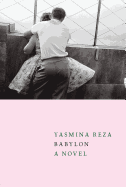
| Publisher: | Seven Stories Press | |
| Genre: | Literary, Fiction | |
| ISBN: | 9781609808327 | |
| Pub Date: | August 2018 | |
| Price: | $23.95 |
| Fiction |
by Yasmina Reza, trans. by Linda Asher
French novelist and playwright Yasmina Reza has a knack for taking a small moment and using it to blow her characters' worlds to smithereens. In plays like Art and God of Carnage, little events are the unseen first dominos to greater chaos. In Babylon, her eighth novel, small moments abound, though it's never clear quite what that first domino is.
Elizabeth, the narrator, is middle-aged and bored with her middle-class existence. Not particularly creative, she devises a dinner party for her friends. The conversation sparks an argument between her married upstairs neighbors Jean-Lino and Lydie. Jean-Lino later wakes Elizabeth and her husband in the middle of the night, revealing that he has strangled his wife and pleading with them to help remove the body. With little hesitation, Elizabeth says yes.
That might sound like the plot to a thriller or crime novel, but Reza is barely interested with the crime itself, and more with Elizabeth's and Jean-Lino's psychological states. Elizabeth frames the story, dropping back into her past every so often with details that seem to have little bearing on her predicament of how exactly to get rid of Lydie's body. Reza deftly creates a woman who can recount her past, but barely explain it, who surmises that she is unhappy but cannot say how and where she went wrong. Jean-Lino is much the same, seemingly helpless in the face of what he's accomplished. Reza doesn't craft a clear-cut narrative of the how and the why of the characters' actions, but instead reveals the swirling mess of memory and fear that drives them forward. --Noah Cruickshank, adult engagement manager, the Field Museum, Chicago, Ill.
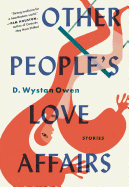
| Publisher: | Algonquin | |
| Genre: | Short Stories (single author), Family Life, General, Literary, Fiction | |
| ISBN: | 9781616207052 | |
| Pub Date: | August 2018 | |
| Price: | $15.95 |
| Fiction |
by D. Wystan Owen
Living in the small English coastal holiday town of Glass, most of the romance-hungry characters in the stories of D. Wystan Owen's Other People's Love Affairs are grown-ups with grown-up yearnings for connection. They are not hormonal teens or 20-somethings swiping Tinder and stalking bars for hookups. The pithy opening story "Lovers of a Kind," for example, tells of the sympathetic pediatric nurse Eleanor making do with her unmarried life, nurturing a local itinerant scavenger, and caring for her ailing father. As the story concludes: "Restraint and a pleasant, underwhelming contentment prevail, still, in the affairs of her life." As in Sinclair Lewis's Winesburg, Ohio, Owen's citizens of Glass share the somewhat melancholic condition of loneliness and diminished expectations. Yet, they are a plucky lot whose dreams and passions are waylaid by circumstance and tough luck.
A graduate of the Iowa Writers' Workshop and co-founder and publisher of the Bare Life Review (a periodical devoted to immigrant and refugee writing), Owen crafts delicate portraits of his characters' often complicated lives. A spurned club owner still adores his headlining jazz singer, a single mom. An alcoholic acts as stand-in father to an orphaned six-year-old boy being raised by an aunt. A widower goes to a movie theater to reminisce about his first romance in its seats. These are caretakers, shopkeepers and artists on the downside of careers, but they are neither defeated nor cantankerous. Instead, most look back with "fondness in the memory of youth's urgency, gratitude for a passion, however short-lived." Other People's Love Affairs is an impressive debut. --Bruce Jacobs, founding partner, Watermark Books & Cafe, Wichita, Kan.
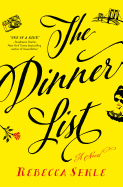
| Publisher: | Flatiron Books | |
| Genre: | Women, Romantic Comedy, Visionary & Metaphysical, Romance, Coming of Age, Fiction | |
| ISBN: | 9781250295187 | |
| Pub Date: | September 2018 | |
| Price: | $27.99 |
| Fiction |
by Rebecca Serle
It's a common thought-provoking, hypothetical challenge: list the five people, living or dead, you'd most love to have dinner with. Although Sabrina made her list years ago, she's still stunned when she shows up to her own birthday dinner in Manhattan. Instead of only her best friend, Jessica, she also finds her estranged (now deceased) father, Robert; a beloved college professor, Conrad; her sort-of fiancé, Tobias (it's complicated); and Audrey Hepburn. As the evening unfolds, Sabrina and her companions examine the difficult truths about their intertwined lives: the romance, regrets and unexpected turns.
Having previously written for a younger audience, Rebecca Serle (When You Were Mine) serves up a delicious, insightful account of friendship, family and deep love in The Dinner List, her debut for adults. She lays out her narrative along two parallel tracks: a time-stamped breakdown of the dinner party, slowly ticking down toward midnight, and a recounting of Sabrina's young adulthood and her love story with Tobias, spanning a decade. The latter story provides important background and fills in some blanks about the other characters: Sabrina's longtime connection with Jessica and their wildly differing approaches to life and love; the effect of her father's absence; Professor Conrad's influence on her life and philosophy. Hepburn, although Sabrina is named after one of her iconic roles, is the wild card at this dinner. But she's a gracious one: like the other characters, she asks incisive questions, makes the occasional wry joke and offers hard-won wisdom when it's needed.
Witty, sweet and unexpectedly moving, The Dinner List offers a menu of keen-eyed, compassionate insights about the relationships that nourish us. --Katie Noah Gibson, blogger at Cakes, Tea and Dreams

| Publisher: | Grove | |
| Genre: | Literary, Fiction | |
| ISBN: | 9780802128072 | |
| Pub Date: | August 2018 | |
| Price: | $25 |
| Fiction |
by Lisa Locascio
Eighteen-year-old Roxana planned to study abroad in Paris with her best friend, but an administrative error forces her to travel unaccompanied to Copenhagen instead, where she meets Søren, her 28-year-old tour guide. After two days of beers and sightseeing, Roxana and Søren fall for each other and she agrees to join him for the rest of the summer in a small town in Jutland, where Søren will write his Ph.D. thesis. There, Roxana experiences a new world of sex and domesticity. She passes the days by herself, tending to the apartment and to her own bodily desires, while nights are for wine, hash and each other. But Søren soon reveals his anger, self-loathing and racist views, inspiring Roxana to seek out an immigrant stranger she has seen in town.
Lisa Locascio's debut novel, Open Me, is a portrait of sensual self-discovery. Roxana isn't far removed from adolescence and Locascio writes expertly about girlhood--the changing physicality, the intimacy of friendship, the evolving family relationships and the indignities of high school. In Denmark, Roxana's mind is more one-track: "I was lost... in the world of my body," she says, and Locascio depicts each scene with intense details. Søren and Roxana's relationship is complicated--not forced, though certainly ill-advised--which makes it seem even more real. As she opens up to new feelings of closeness and desire, she also experiences the almost palpable sensation of being crushed by someone else's emotions. Through it all, Roxana is getting to know herself, internally and externally, as an adult, as a lover and as an American. --Katy Hershberger, freelance writer and bookseller
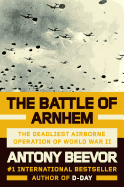
| Publisher: | Viking | |
| Genre: | Strategy, 20th Century, History, Military, World War II, Modern | |
| ISBN: | 9780525429821 | |
| Pub Date: | September 2018 | |
| Price: | $35 |
| History |
by Antony Beevor
By September 1944, Allied armies had broken through German-occupied France and Belgium. Their next step--penetrating the Reich itself--meant overcoming two major obstacles: the heavily fortified Siegfried Line and the Rhine River. To that end, British Field Marshal Bernard Montgomery devised Operation Market Garden, in which British, American and Polish troops would parachute into the Netherlands, capture a series of key bridges and await reinforcements. Montgomery assumed German resistance would be light after devastating losses in Normandy. He was wrong.
The British 1st Airborne Division was tasked with taking the road bridge over the Lower Rhine at Arnhem. This objective, the deepest into enemy territory, was meant to be the bridgehead in a continuing offensive, but most of the 1st Airborne never made it out of Arnhem. German strength was diminished but far from destroyed--sudden reinforcements turned Arnhem into a cauldron of urban combat, while units to the south (including the 101st Airborne Division of Band of Brothers fame) were bogged down by bad planning, spotty communication and unexpectedly fierce opposition. Market Garden achieved few of its objectives at tremendous cost. Its failure left the Netherlands at the mercy of the Germans, who extracted terrible tolls in retaliation for helping Allied paratroopers.
In The Battle of Arnhem, British military historian Antony Beevor chronicles how everything that could go wrong with Market Garden did go wrong. Beevor, author of numerous acclaimed World War II histories including Stalingrad and Berlin 1945, has an uncanny ability to layer in-depth information on units, movements and commanders with riveting personal stories, such that The Battle of Arnhem offers an intricate account for military history buffs while still remaining an engaging tale for general readers. --Tobias Mutter, freelance reviewer
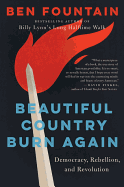
| Publisher: | Ecco | |
| Genre: | American Government, Political Process, United States, History & Theory, 21st Century, General, Campaigns & Elections, History, Essays, Executive Branch, Political Science | |
| ISBN: | 9780062688842 | |
| Pub Date: | September 2018 | |
| Price: | $27.99 |
| Starred | Political Science |
by Ben Fountain
A former attorney and author of the novel Billy Lynn's Long Halftime Walk, Ben Fountain dissects the 2016 United States presidential campaign in a series of passionate essays. Coupling historical context with current events, Fountain argues that the country is facing a deep existential crisis. He believes that only twice before in U.S. history--the Civil War and the Great Depression--has a crisis of this level occurred. And each time, "the United States has had to reinvent itself to survive as a plausibly genuine constitutional democracy." The modern gross disparities in wealth and opportunity--what Franklin Roosevelt termed "economic tyranny"--mirror the glaring inequality of the nation's earlier pivotal events. And, coincidentally, they are spaced nearly identically on the timeline of U.S. history: roughly 80 years apart.
Fountain guides his readers chronologically from January through December, from the Iowa Caucuses through the weeks following the election. He attends rallies, the NRA convention, the parties' national conventions, taking a front-row seat to the events that define that extraordinary year. Along the tumultuous journey he delves into pertinent chapters of American history such as the Southern strategy, the Vietnam War, the Occupy movement and their relationship to the state of affairs in 2016.
His words are emotional and powerful. While Donald Trump and those who enable him are primary targets, no one escapes his criticism, including much of the American electorate. Beautiful Country Burn Again has the potential to arm the body politic with their greatest weapon--knowledge. --Jen Forbus, freelancer
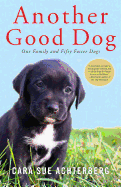
| Publisher: | Pegasus Books | |
| Genre: | Biography & Autobiography, Pets, Dogs, Personal Memoirs, General | |
| ISBN: | 9781681777931 | |
| Pub Date: | August 2018 | |
| Price: | $25.95 |
| Pets |
by Cara Sue Achterberg
"If my mother taught me anything it's that making any kind of difference in this world always requires a sacrifice." That's how author Cara Sue Achterberg explains her ability to part with foster dogs whenever people ask, "Isn't it hard to let them go?" In her memoir detailing the chaotic first two years of her canine-fostering experience, Achterberg doesn't sugarcoat anything. It's difficult to say goodbye, and she's almost been a foster failure--someone who adopts their foster--on several occasions. But, ultimately, she wants to help as many dogs as she can, and that means letting each go in order to make room for others.
The loss of her own dog, Lucy, triggers Achterberg's desire to try fostering; she'll test dogs until she finds the right one for her family. However, what starts out as a pet search turns into a life mission. Achterberg passionately recounts her first fosters and all the follies and joys that accompany them. As she finds her footing, she ventures into fostering puppies and even a pregnant dog. Sometimes a dog isn't out her door before she's accepting a new one--or more. She wonders if her new calling is an addiction, "It felt so good to help a dog and to help a family. A happy drug. I needed another hit."
Another Good Dog is heartwarming and humorous. Achterberg fills her readers with the warmth of hope and light of inspiration, which will likely galvanize a new wave of fosters. A happy drug, indeed. --Jen Forbus, freelancer
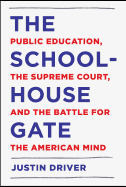
| Publisher: | Pantheon | |
| Genre: | Law, Constitutional, Administrative Law & Regulatory Practice, Education, Civil Rights, General, Educational, Educational Policy & Reform | |
| ISBN: | 9781101871652 | |
| Pub Date: | September 2018 | |
| Price: | $35 |
| Education |
by Justin Driver
The constitutional rights of public school students, as interpreted by the U.S. Supreme Court, are the subject of Justin Driver's The Schoolhouse Gate: Public Education, the Supreme Court, and the Battle for the American Mind. The Court's decisions in the context of public education shape the everyday reality of schools across the nation. They are exceedingly relevant in that, according to Driver, one-sixth of the U.S. population can be found in a public school on a typical day.
The Supreme Court has a checkered history when it comes to protecting the rights of students within classrooms and on school grounds. The Court has often diluted and weakened constitutional protections, prompting one brave student litigant to inquire: How can schools expect children to learn about freedom of expression if they are not allowed to exercise it?
Throughout his engaging analysis of landmark constitutional case law, Driver, a professor at the University of Chicago School of Law, demonstrates great respect and admiration for the students and families brave enough to challenge existing school practices. With detailed annotations and objective reasoning, he skillfully unravels the sometimes convoluted judicial opinions to draw out their essence and social impact. Addressing key democratic themes of freedom of speech, racial and sexual equality, patriotism, liberty, safety, due process and more, The Schoolhouse Gate is an ambitious undertaking that is equally accessible to the legal community and the layperson. Readers can gain an excellent introduction to the Supreme Court's role in American society as well as insight into some of the finest legal minds in the nation's history. --Shahina Piyarali, writer and reviewer
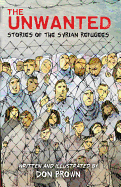
| Publisher: | Houghton Mifflin Harcourt | |
| Genre: | Middle East, People & Places, Emigration & Immigration, Young Adult Nonfiction, General, Social Topics, Civil & Human Rights, Military & Wars, History, Comics & Graphic Novels | |
| ISBN: | 9781328810151 | |
| Pub Date: | September 2018 | |
| Price: | $18.99 |
| Starred | Children's & Young Adult |
by Don Brown
The Unwanted's first two images couldn't be more jarring: on the title page, a hijab-wearing woman raises her hand to her face in overwhelming distress; a turn of the page reveals a girl holding flowers, smiling back over her shoulder as she walks across a town square lush with greenery. Both are victims of war, the former made desperate by a nation in ruins, the latter still innocent, destruction about to uproot her young life.
While the factious situation in war-torn Syria is difficult even for adults to comprehend, what writer/illustrator Don Brown (America Is Under Attack) offers here is an empathic account of how everyday citizens--especially women and children--take tortuous paths toward survival. They are The Unwanted, who, without a future in their own country, must search elsewhere for home.
Using a similar format that won him awards for Drowned City, Brown presents a graphic hybrid of history and facts--explained in text boxes--with scenes of personal experiences. Beyond numbing data, Brown gives faces and voices to the refugees, as he chronicles various journeys out: "We gave the babies sleeping pills so they wouldn't cry," a fleeing mother reveals. "I tried to catch my wife and children in my arms. But one by one, they drowned," a man mourns over his survival. Brown's panels can't--won't?--contain all that the Syrians must endure, as weapons, explosions, fleeing crowds, suffering victims repeatedly break through panel outlines. Yet amid the struggles, Brown won't abandon hope: the lamenting woman and the little girl from the introduction return in the final pages, safe in a future that "is now." In urgently humanizing The Unwanted, Brown's sobering explication and tenacious advocacy prove both necessary and revelatory. --Terry Hong, Smithsonian BookDragon
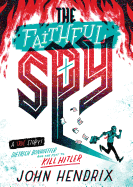
| Publisher: | Amulet | |
| Genre: | Biography & Autobiography, Holocaust, Religious, Religion, Military & Wars, Christianity, History, Juvenile Nonfiction, Historical | |
| ISBN: | 9781419728389 | |
| Pub Date: | September 2018 | |
| Price: | $24.99 |
| Children's & Young Adult |
by John Hendrix
Dietrich Bonhoeffer, born in Germany in 1906, was a Lutheran pastor and theologian who became a powerful voice for personal and religious opposition to Hitler's Nazism. Packed with pencil drawings and printed with a custom typeface based on the author's handwriting, The Faithful Spy carries readers straight into the complicated and ominous period between the two World Wars, when many Germans, after the humiliation of the Great War, "were hungry for a vision of triumph, conquest, and rebirth." Author/illustrator John Hendrix masterfully tells the story of Bonhoeffer, one of the first people in Europe to see Hitler's charismatic rise to leadership for what it was: a mad attempt to "grab the reins of power while the great German horse was without a rider."
Hendrix's (Rutherford B., Who Was He?: Poems About Our Presidents; Miracle Man: The Story of Jesus) uncommon style weaves nonstop illustrations with blocks of facts, imagined conversations and direct quotes from a chilling era. He helps readers begin to make sense of the unfathomable: how so many in a country could not only tolerate but rabidly support a man whose operating principles relied on hatred, fear and murder. He also helps readers understand that not all in Hitler's Germany supported the regime; many--even high-ranking officers in the armed forces and officials in the Nazi party--were secretly fighting back from their positions of power.
Readers of this information-dense history/biography will bear an intellectual load but it is lightened by frequent sidebars and captioned illustrations. In the author's note, Hendrix points out how important the telling of this story is: "Despite the lessons learned from the horrors of World War II, recent history has shown humanity has not been permanently vaccinated against tyrants. We never will be." --Emilie Coulter, freelance writer and editor
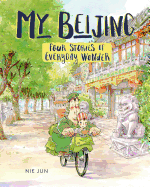
| Publisher: | Graphic Universe | |
| Genre: | People & Places, Asia, Special Needs, General, Short Stories, Social Themes, Juvenile Fiction, Comics & Graphic Novels | |
| ISBN: | 9781541526426 | |
| Pub Date: | September 2018 | |
| Price: | $9.99 |
| Children's & Young Adult |
by Nie Jun, trans. by Edward Gauvin
A graphic novel in four parts, My Beijing includes stories about Yu'er, her Grampa and the "Everyday Wonder" of their lives in one of Beijing's hutongs, the traditional neighborhoods for which the city is known.
Yu'er desperately wants to learn how to swim (her name means Fish Child, after all) but, because of an unnamed disability that requires her to use a cane, no swim clubs will allow her membership. "People think I'm different," she says sadly to Grampa. He wheels her away in a cart attached to his bike, exclaiming, "Oh, who cares what they think!"--he has an idea. The next page shows Yu'er diving deep down underwater; the next one depicts her dangling from a tree, hooked up to a pulley system with Grampa at the other end. From the ground, Grampa gives lessons in controlling breathing and finding balance: "Just imagine you're in the water.... Do you feel like you're floating?" Yu'er loves her new "pool" and swims in the tree until suddenly she's flying up through the sky, swimming out of her neighborhood and into the city. "Go, my little Yu'er! Go!"
Each of the four stories has a wondrous turn that takes the reader from the simple, gentle mundanity of the everyday lives of Yu'er and Grampa into the slightly, but still friendly, surreal. Whether she makes a new friend who is actually her Grampa as a boy or she's mailing a letter into the past, Yu'er slips gracefully (and without knowledge) in and out of time in a way that leads to pleasant surprises rather than shockers. Nie Jun's illustrations are lush, the figures expressive and Beijing itself captivating in its detail. One hopes that this first work of Nie Jun's to be translated into English is the first of many. --Siân Gaetano, children's and YA, Shelf Awareness